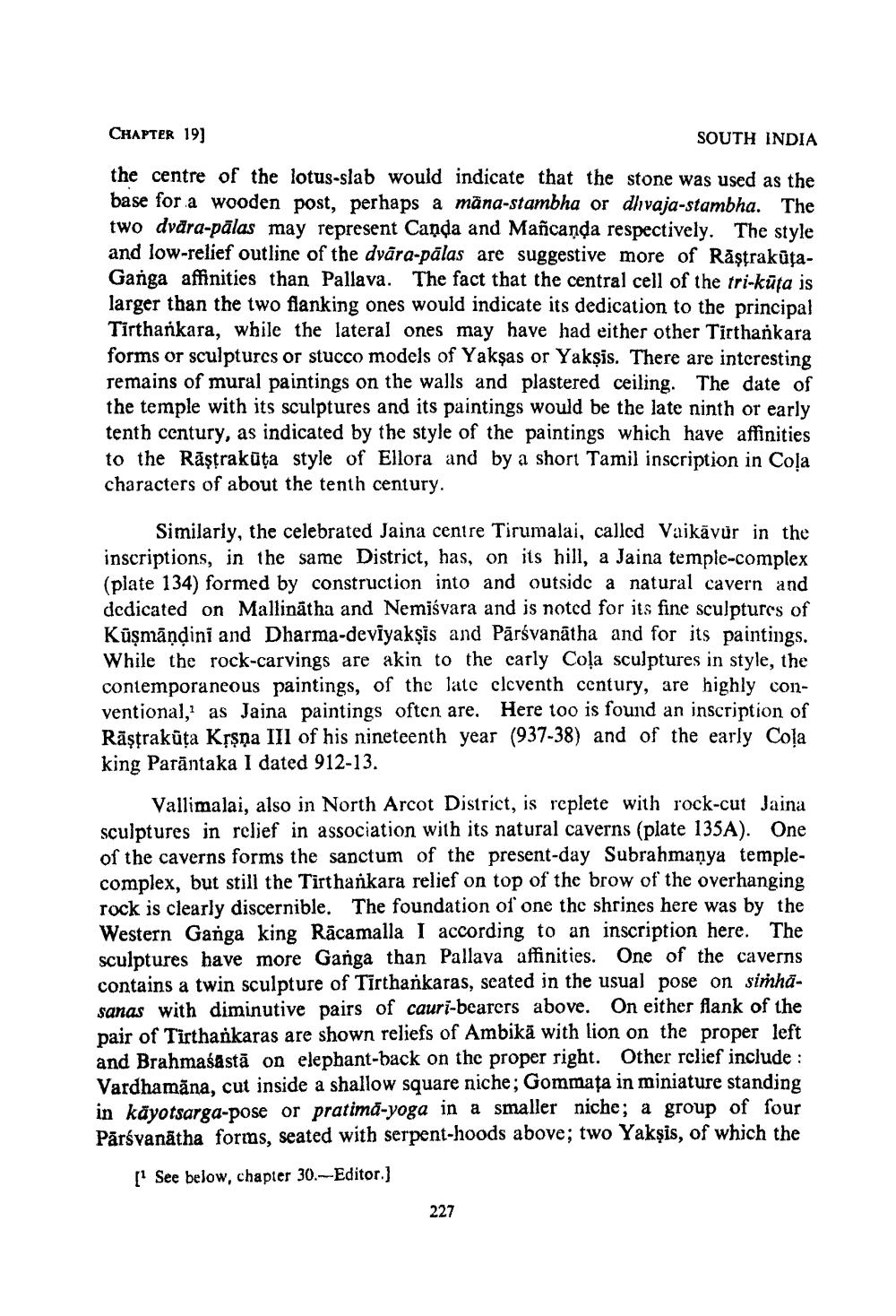________________
CHAPTER 19)
SOUTH INDIA
the centre of the lotus-slab would indicate that the stone was used as the base for a wooden post, perhaps a māna-stambha or dhivaja-stambha. The two dvära-pālas may represent Canda and Mañcanda respectively. The style and low-relief outline of the dyāra-pālas are suggestive more of RăştrakūtaGanga affinities than Pallava. The fact that the central cell of the tri-kūta is larger than the two flanking ones would indicate its dedication to the principal Tirthańkara, while the lateral ones may have had either other Tirthankara forms or sculptures or stucco models of Yakşas or Yaksis. There are interesting remains of mural paintings on the walls and plastered ceiling. The date of the temple with its sculptures and its paintings would be the late ninth or early tenth century, as indicated by the style of the paintings which have affinities to the Rāstrakūta style of Ellora and by a short Tamil inscription in Cola characters of about the tenth century.
Similarly, the celebrated Jaina centre Tirumalai, called Vaikāvur in the inscriptions, in the same District, has, on its hill, a Jaina temple-complex (plate 134) formed by construction into and outside a natural cavern and dedicated on Mallinātha and Nemiśvara and is noted for its fine sculptures of Kūşmāndini and Dharma-deviyaksis and Pārsvanātha and for its paintings. While the rock-carvings are akin to the carly Coļa sculptures in style, the contemporaneous paintings, of the late clcventh century, are highly conventional, as Jaina paintings often are. Here too is found an inscription of Rāştrakūta Krşņa III of his nineteenth year (937-38) and of the early Cola king Parāntaka I dated 912-13.
Vallimalai, also in North Arcot District, is replete with rock-cut Jaina sculptures in relief in association with its natural caverns (plate 135A). One of the caverns forms the sanctum of the present-day Subrahmanya templecomplex, but still the Tirthankara relief on top of the brow of the overhanging rock is clearly discernible. The foundation of one the shrines here was by the Western Ganga king Rācamalla I according to an inscription here. The sculptures have more Ganga than Pallava affinities. One of the caverns contains a twin sculpture of Tirthankaras, seated in the usual pose on siṁhasanas with diminutive pairs of cauri-bearers above. On either flank of the pair of Tirthankaras are shown reliefs of Ambikā with lion on the proper left and Brahmaśāstā on elephant-back on the proper right. Other relief include: Vardhamāna, cut inside a shallow square niche; Gommața in miniature standing in käyotsarga-pose or pratima-yoga in a smaller niche; a group of four Pārsvanātha formas, seated with serpent-hoods above; two Yaksis, of which the
[ See below, chapter 30.-Editor.}
227




